QCMD Data Analysis with PyQTM
AWsensors Technology Note, video, and executable QCMD Data Analysis with PyQTM.
Noticias para apartado News
AWsensors Technology Note, video, and executable QCMD Data Analysis with PyQTM.
Advanced Wave Sensors S.L. (AWSensors), en el marco del programa “Proyectos de Consolidación de la Cadena de Valor Empresarial” (Convocatoria 2023), ha contado con el apoyo de la Agència Valenciana de la Innovació y con la cofinanciación del fondo europeo FEDER para el desarrollo de un proyecto de investigación industrial en el campo de los biosensores. El proyecto dió comienzo en octubre de 2023 y tiene prevista una duración de 27 meses, hasta su finalización en diciembre de 2025. El proyecto cuenta con una subvención de 178.219,62 €.
El objetivo principal de este proyecto es la investigación de procesos industriales necesarios para el desarrollo de nuevas técnicas de bio-funcionalización superficial que permita la inmovilización de sondas de biorreconocimiento, tales como aptámeros, anticuerpos o secuencias de ADN, en la superficie de microrresonadores acústicos de una manera precisa, controlada, rápida, repetitiva, y a un coste reducido.
La técnica BioprintedQCM se aplicará en el desarrollo de nuevos biosensores basados en dispositivos HFF-QCM ARRAY, propiedad de AWSensors.
«Actuación susceptible de ser cofinanciada por la Unión Europea»
![]()
Advanced Wave Sensors S.L. (AWSensors) ha obtenido una operación de préstamo cofinanciada por la Unión Europea a través del Programa Operativo del Fondo de Desarrollo Regional (FEDER) de la Comunitat Valenciana 2014-2020, todo ello de conformidad con lo previsto en el anexo XII del Reglamento (UE) 1303/2013 del Parlamento Europeo y del Consejo de 17 de diciembre de 2013. La financiación ha sido gestionada a través del Institut Valencià de Finances en el ámbito del instrumento financiero «Préstamos bonificados IVF PYME REACT-EU FEDER» del Programa operativo FEDER de la Comunitat Valenciana 2014-2020.
«Una manera de hacer Europa»

Advanced Wave Sensors S.L. (AWSensors), en el marco del programa “Proyectos Estratégicos en Cooperación“, ha contado con el apoyo de la Agència Valenciana de la Innovació y con la cofinanciación del fondo europeo FEDER para el desarrollo de un proyecto de investigación industrial en el campo de los biosensores. El proyecto lo lidera AWSensors, junto con la Universitat de Politècnica de València y la Empresa Mixta Valenciana de Aguas, S.A., comenzando en mayo de 2022 y finalizando en septiembre de 2024. El proyecto cuenta con un presupuesto total de 297.531,75 € con una subvención de 178.519,05 €.
El objetivo principal de este proyecto es desarrollar una nueva técnica analítica de biosensores para la detección temprana de biomarcadores ligados a presencia de bacterias en la red de distribución de agua potable que funcione como un sistema de alerta y vigilancia constante. La tecnología propuesta, basada en la tecnología sensora QCMD de AWSensors, supone una ventaja respecto a las tecnologías disponibles por su robustez, sensibilidad, detección directa en tiempo real, capacidad de análisis multianualito, bajo coste por ensayo, bajo coste por sensor, modularidad y su facilidad de uso.
Durante el transcurso del proyecto, se trabajará en la selección de un conjunto de biomarcadores que permitan su cuantificación y relación con la presencia y viabilidad de bacterias en aguas, se desarrollaron protocolos analíticos de validación primero a nivel de laboratorio y, posteriormente, sobre la plataforma biosensora desarrollada a tal efecto.
«Actuación susceptible de ser cofinanciada por la Unión Europea»
![]()
Advanced Wave Sensors S.L. (AWSensors) en el marco del Programa INVEST IN SPAIN, ha contado con el apoyo de ICEX y con la cofinanciación del fondo europeo FEDER para el desarrollo de su proyecto de investigación industrial en el campo de la funcionalización bioquímica de superficies. El objetivo de este proyecto era el desarrollo de protocolos de modificación de la superficie de los sensores QCMD comercializados por la empresa que limiten la adsorción inespecífica a la vez que maximicen las interacciones moleculares específicas.
Durante el transcurso del proyecto, se seleccionó un conjunto de reactivos potenciales en base a la investigación bibliográfica, se desarrollaron protocolos para modificar las superficies de los sensores y evaluar el desempeño de los sensores modificados; Se diseñaron y fabricaron herramientas dedicadas para ayudar en el proceso de superficie. La evaluación del rendimiento de los sensores QCMD modificados en su superficie condujo a la selección de un reactivo específico para el bloqueo de la adsorción no específica. Adicionalmente, estas modificaciones de la superficie se caracterizaron mediante ensayos de tipo inmunológicos (unión antígeno y anticuerpo modelo) para evaluar su utilidad.
Los protocolos desarrollados durante el transcurso del proyecto nos han permitido el desarrollo de un producto comercial, el sensor QCMD con superficie biotinilada, que esperamos introducirlo en el mercado a fines del verano de 2023. Este producto ofrecerá a los usuarios de nuestra tecnología mayores facilidades a la hora de adaptar la superficie del sensor al ensayo y moléculas necesarias para el desarrollo de los mismos.
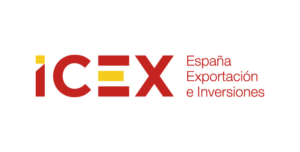

ADVANCED WAVE SENSORS, S.L. (AWSensors) ha sido beneficiario del Fondo Europeo de Desarrollo Regional cuyo objetivo es mejorar el uso y la calidad de las tecnologías de la información y de las comunicaciones y el acceso a las mismas y gracias al que ha desarrollado los proyectos de “Gestión integral (ERP)” y “Sistemas de diseño asistido por computador e impresión 3D para prototipo rápido“, para la mejora de competitividad y productividad de la empresa. (30/06/2022). Para ello ha contado con el apoyo del programa Industria 4.0 de la Cámara de Comercio de Valencia. Una manera de hacer Europa
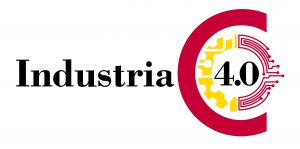


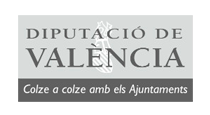
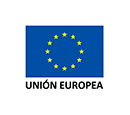
30/03/2022. Advanced Wave Sensors S.L. (AWSensors) continúa trabajando en su estrategia de internacionalización. Durante los próximos meses, contaremos con el apoyo de un asesor especializado de la Cámara de Comercio de Valencia, en el marco del Programa Xpande 2022, para la elaboración de un Plan de Internacionalización encaminado a abrir nuevos mercados donde comercializar nuestros equipos de instrumentación de sensores acústicos (Quartz Crystal Microbalance with Dissipation monitoring, QCMD, de sus siglas en inglés), así como mejorar la competitividad global.
AWSensors ha sido beneficiaria del Fondo Europeo de Desarrollo Regional cuyo objetivo es mejorar la competitividad de las Pymes y gracias al cual ha puesto en marcha un Plan de Internacionalización con el objetivo de mejorar su posicionamiento competitivo en el exterior durante el año 2022. Para ello ha contado con el apoyo del Programa XPANDE de la Cámara de Comercio de Valencia.
Una manera de hacer Europa





AWSensors presents a new Technology Note on the importance of dissipation measuring when working with QCMD: “The difference the “D” makes in QCMD”.
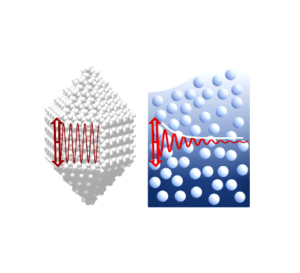
Quartz Crystal Microbalance with Dissipation, or QCMD, is having a tremendous impact on research in the soft and biological interfaces fields because of its versatility and the wealth of information it provides. In this Technology Note, we discuss the origins of dissipation in the different systems studied by QCMD, from complex fluids and polymer films to biomolecular and particle assemblies, and the information dissipation can provide, from characterizing viscoelasticity to studying molecular conformation.
In this Technical Note we discuss the origins of dissipation, how it can be used to verify the applicability of the Sauerbrey relationship and their interaction with the viscoelasticity and in the biological sensing.
You can read and download the full Technology Note in pdf file from this link. A list of our Technology Notes can be found on our Technology Web Page..
Siguiendo con la estrategia de internacionalización de AWSensors, la empresa incorpora a Nuria Portolés Cervera al equipo de Ventas y Marketing dentro del marco de su participación en el programa de Becas E+E – Exportación y Empleo 2021 del Instituto Valenciano de Competitividad Empresarial (IVACE). Durante 8 meses, Nuria cumplirá con un plan formativo en Comercio Exterior y contribuirá con su trabajo en la internacionalización y promoción de la marca y productos QCMD de AWSensors a nivel internacional.
El pasado 28 de diciembre de 2021 se otorgaron los destinos donde las personas becadas en este programa, como Nuria, realizan su formación práctica. Este acto institucional, que estuvo presidido por el Molt Honorable Sr. Ximo Puig, Presidente de la Generalitat Valenciana, y por el Conseller de Economía Sostenible, Sectores Productivos, Comercio y Trabajo, el Sr. Rafael Climent, tuvo lugar en el Palau de la Generalitat.
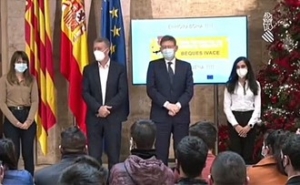
El programa de Becas E+E está gestionado por IVACE y financiado por el Fondo Social Europeo, dentro de la Iniciativa de empleo juvenil. El programa tiene por objetivo proporcionar una formación profesional en Comercio Exterior a las personas participantes, así como de dotar de más herramientas a las entidades y empresas participantes que sirvan de apoyo en su internacionalización.
![]()
Fuente: https://twitter.com/i/broadcasts/1OdKrBMzpneKX
AWSensors ran a successful hands-on training workshop at the Gizeli group at IMBB FORTH in Crete, Greece. Undergraduate students, graduate students, and postdocs were invited to attend the session and learned how to use our X1 QCMD instrument and Love-SAW devices. During the workshop, participants had the opportunity to understand how to effectively utilize these acoustic sensing technologies for their research. Building on their core expertise in molecular biology and biophysics, the Gizeli group is exploring biosensing applications in human, animal, and plant disease diagnostics as well as pathogen and environmental pollutant detection. The training helped researchers in the group exploit the unique advantages of AWSensors’ equipment, such as sensitivity, time resolution, flexibility, integrated flow control, and ease of use, for biosensor development.
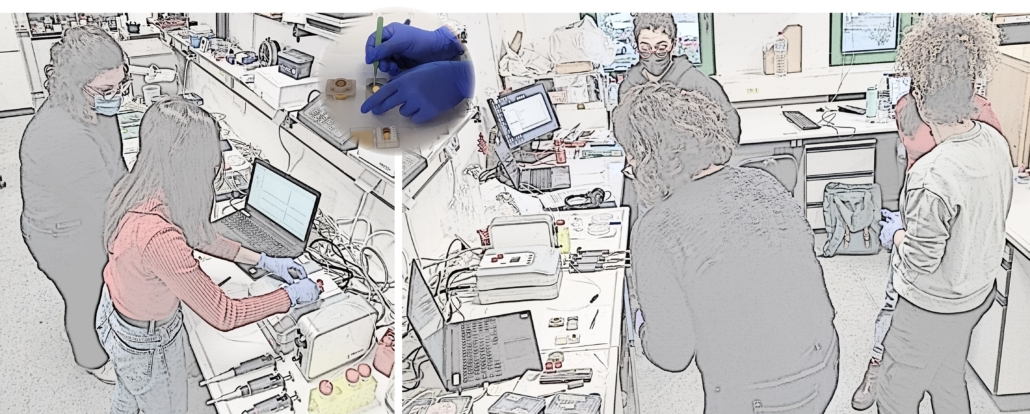

From this panel the user will be able to configure the cookies that the website can install in their browser, except for the technical or functional cookies that are necessary for browsing and using the different options or services that are offered.
The selected cookies indicate that the user authorises the installation in their browser and the processing of data under the conditions stated in the Cookie Policy.
The user can check or uncheck as they wish to accept or reject the installation of cookies.
COOKIES CONTROLLED BY THE EDITOR
| Analytics | ||||
| Property | Cookie | Purpose | Term | |
| awsensors.com | _ga | ID used to identify users | in 2 years | |
| awsensors.com | _gat | Used to monitor number of Google Analytics server requests when using Google Tag Manager | Sesión | |
| awsensors.com | _gid | ID used to identify users for 24 hours after last activity | in 20 hours | |
| Marketing | ||||
| Property | Cookie | Purpose | Term | |
| google.com | NID | This cookies is used to collect website statistics and track conversion rates and Google ad personalisation | in 7 months |
| HOW TO MANAGE COOKIES FROM YOUR BROWSER | ||
| Delete cookies from your device | Cookies that are already on a device can be deleted by clearing the browser history, thus deleting the cookies from all websites visited.
However, some of the saved information (e.g. login data or website preferences) may also be lost. |
|
| Manage site specific cookies | For more precise control of site specific cookies, users can adjust their privacy settings and cookies in their browser. | |
| Blocking cookies | While most modern browsers can be configured to prevent cookies from being installed on a device, this may require the manual adjustment of certain preferences each time a site or page is visited. In addition, some services and features may not work properly (for example, profile logins). | |
| HOW TO DELETE COOKIES FROM MOST COMMON BROWSERS | ||
| Chrome | http://support.google.com/chrome/answer/95647?hl=es | |
| Internet Explorer. Version 11 | https://support.microsoft.com/es-es/help/278835/how-to-delete-cookie-files-in-internet-explorer | |
| Firefox. Version 65.0.1 | https://www.mozilla.org/es-ES/privacy/websites/#cookies | |
| Safari Version 5.1 | https://support.apple.com/es-es/guide/safari/sfri11471/mac | |
| Opera | https://help.opera.com/en/latest/security-and-privacy/#clearBrowsingData | |
Desde este panel podrá configurar las cookies que el sitio web puede instalar en su navegador, excepto las cookies técnicas o funcionales que son necesarias para la navegación y la utilización de las diferentes opciones o servicios que se ofrecen.
Las cookies seleccionadas indican que el usuario autoriza la instalación en su navegador y el tratamiento de datos bajo las condiciones reflejadas en la Política de cookies.
El usuario puede marcar o desmarcar el selector según se desee aceptar o rechazar la instalación de cookies.
COOKIES CONTROLADAS POR EL EDITOR
| Analíticas | ||||
| Propiedad | Cookie | Finalidad | Plazo | |
| awsensors.com | _ga | ID utiliza para identificar a los usuarios | en 2 años | |
| awsensors.com | _gat | Se utiliza para monitorizar el número de peticiones al servidor de Google Analytics cuando se utiliza el Administrador de etiquetas Google | Sesión | |
| awsensors.com | _gid | ID utiliza para identificar a los usuarios durante 24 horas después de la última actividad | en 20 horas | |
| Publicitarias | ||||
| Propiedad | Cookie | Finalidad | Plazo | |
| google.com | NID | Estas cookies se utilizan para recopilar estadísticas del sitio web y rastrear las tasas de conversión y la personalización de anuncios de Google | en 7 meses |
| CÓMO GESTIONAR LAS COOKIES DESDE EL NAVEGADOR | ||
| Eliminar las cookies del dispositivo | Las cookies que ya están en un dispositivo se pueden eliminar borrando el historial del navegador, con lo que se suprimen las cookies de todos los sitios web visitados. Sin embargo, también se puede perder parte de la información guardada (por ejemplo, los datos de inicio de sesión o las preferencias de sitio web). | |
| Gestionar las cookies específicas del sitio | Para tener un control más preciso de las cookies específicas de cada sitio, los usuarios pueden ajustar su configuración de privacidad y cookies en el navegador. | |
| Bloquear las cookies | Aunque la mayoría de los navegadores modernos se pueden configurar para evitar que se instalen cookies en los dispositivos, eso puede obligar al ajuste manual de determinadas preferencias cada vez que se visite un sitio o página. Además, algunos servicios y características pueden no funcionar correctamente (por ejemplo, los inicios de sesión con perfil). | |
| CÓMO ELIMINAR LAS COOKIES DE LOS NAVEGADORES MÁS COMUNES | ||
| Chrome | http://support.google.com/chrome/answer/95647?hl=es | |
| Internet Explorer. Versión 11 | https://support.microsoft.com/es-es/help/278835/how-to-delete-cookie-files-in-internet-explorer | |
| Firefox. Versión 65.0.1 | https://www.mozilla.org/es-ES/privacy/websites/#cookies | |
| Safari Versión 5.1 | https://support.apple.com/es-es/guide/safari/sfri11471/mac | |
| Opera | https://help.opera.com/en/latest/security-and-privacy/#clearBrowsingData | |
Strictly Necessary Cookie should be enabled at all times so that we can save your preferences for cookie settings.
Las cookies estrictamente necesarias tiene que activarse siempre para que podamos guardar tus preferencias de ajustes de cookies.
Básicamente la web no funcionará bien si no las activas.
Estas cookies son:
If you disable this cookie, we will not be able to save your preferences. This means that every time you visit this website you will need to enable or disable cookies again.
Si desactivas esta cookie no podremos guardar tus preferencias. Esto significa que cada vez que visites esta web tendrás que activar o desactivar las cookies de nuevo.
Third-party services are beyond the control of the editor. Suppliers may at any time modify their service conditions, the purpose and use of cookies, etc.
External suppliers of this website:
| Editor | Privacy Policy |
| Google Analytics | https://privacy.google.com/take-control.html |
| https://privacy.google.com/take-control.html | |
| PHP.net | https://www.php.net/privacy.php |
| Wordpress | https://wordpress.org/about/privacy/cookies/ |
COOKIES CONTROLLED BY THE EDITOR
| Analytics | ||||
| Property | Cookie | Purpose | Term | |
| awsensors.com | _ga | ID used to identify users | in 2 years | |
| awsensors.com | _gat | Used to monitor number of Google Analytics server requests when using Google Tag Manager | Sesión | |
| awsensors.com | _gid | ID used to identify users for 24 hours after last activity | in 20 hours | |
| Marketing | ||||
| Property | Cookie | Purpose | Term | |
| google.com | NID | This cookies is used to collect website statistics and track conversion rates and Google ad personalisation | in 7 months |
COOKIES DE TERCEROS
COOKIES CONTROLADAS POR EL EDITOR
Los servicios de terceros son ajenos al control del editor. Los proveedores pueden modificar en todo momento sus condiciones de servicio, finalidad y utilización de las cookies, etc.
| Editor | Política de privacidad |
| Google Analytics | https://privacy.google.com/take-control.html |
| https://privacy.google.com/take-control.html | |
| PHP.net | https://www.php.net/privacy.php |
| Wordpress | https://wordpress.org/about/privacy/cookies/ |
Proveedores externos de este sitio web:
| Analíticas | ||||
| Propiedad | Cookie | Finalidad | Plazo | |
| awsensors.com | _ga | ID utiliza para identificar a los usuarios | en 2 años | |
| awsensors.com | _gat | Se utiliza para monitorizar el número de peticiones al servidor de Google Analytics cuando se utiliza el Administrador de etiquetas Google | Sesión | |
| awsensors.com | _gid | ID utiliza para identificar a los usuarios durante 24 horas después de la última actividad | en 20 horas | |
| Publicitarias | ||||
| Propiedad | Cookie | Finalidad | Plazo | |
| google.com | NID | Estas cookies se utilizan para recopilar estadísticas del sitio web y rastrear las tasas de conversión y la personalización de anuncios de Google | en 7 meses |
Please enable Strictly Necessary Cookies first so that we can save your preferences!
¡Por favor, activa primero las cookies estrictamente necesarias para que podamos guardar tus preferencias!
More information about our Cookie Policy
Más información sobre nuestra política de cookies aquí
